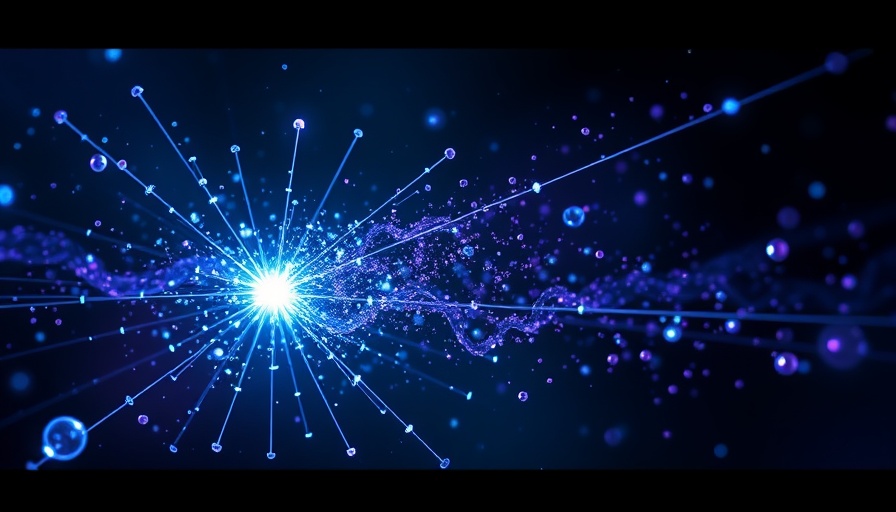
Understanding the Connection Between Quantum Entanglement and Particle Production
The recent study conducted by physicists at Brookhaven National Laboratory and Stony Brook University has unveiled pivotal insights into particle creation in high-energy collisions. These findings shed light on how entangled particles—those that exhibit quantum correlations—retain information about their origins, an area that has long been obscured in particle physics.
Jet Formation: A Quantum Hotspot
In the study, researchers explored jets emerging from proton-proton collisions at the Large Hadron Collider (LHC). Jets are collimated sprays created from the fragmentation of quarks and gluons during collisions. The study reveals that the level of entanglement among quarks and gluons significantly influences the distribution of the resulting particles, suggesting that jets are not just random bursts of energy, but structures that encode vital information about their initial conditions.
The Role of Entanglement in Particle Physics
One of the main insights from this research is the connection between entanglement entropy at the moment of jet formation and the properties of particles as they evolve. The researchers noted that higher entanglement correlates with messier distributions of resulting particles, reinforcing the idea that entanglement plays a crucial role in shaping physical outcomes in high-energy environments.
Broader Implications for Quantum Physics and Technology
The implications of these findings extend beyond theoretical physics. With a deeper understanding of how entanglement influences particle behavior, researchers could potentially leverage these principles for advancements in quantum computing, cryptography, and other emerging technologies. This knowledge may pave the way for innovations in material sciences and quantum simulation, cementing the practical applications of sophisticated particle physics research.
The Woods Are Deep: Quantum Mechanics Meet Real-World Applications
As we venture into a future shaped by quantum technology, the revelations from Brookhaven and Stony Brook invoke contemplation on their real-world applications. How might our increased understanding of particle interactions through entanglement help mitigate challenges in energy production or create more efficient computing systems? The significance of this research lies not only in rich academic discourse but also in the potential it unlocks for practical solutions.
Exploring the Future: Advancement of the Electron-Ion Collider
With facilities like the upcoming Electron-Ion Collider at Brookhaven, researchers anticipate further exploration of these phenomena. This state-of-the-art collider aims to push the boundaries of nuclear physics, offering unprecedented opportunities to probe the inner workings of matter. As this facility comes online, the promise of discovering even more intricate details about particle creation and the fundamental laws of physics looms.
Final Thoughts on Particle Creation and Quantum Entanglement
The study of jets and their relationship to quark-gluon entanglement opens new avenues of inquiry in particle physics. Recognizing that these jets retain information about their formation leads to a deeper comprehension of the universe's building blocks. It inspires a reexamination of how we perceive and interact with the quantum world, emphasizing the interconnectedness of various aspects of science, technology, and everyday life.
As we embrace the complexity of these concepts, it’s essential to engage with them through various lenses—be they scientific, philosophical, or practical. The work done at Brookhaven and Stony Brook is not merely applicable to physicists but resonates with anyone interested in the broader scope of knowledge ushering us into the quantum age.
If you want to stay updated on cutting-edge developments in technology and science, subscribe to our newsletter for insightful articles and innovations shaping our future.
 Add Element
Add Element  Add Row
Add Row 



 Add Row
Add Row  Add
Add 


Write A Comment